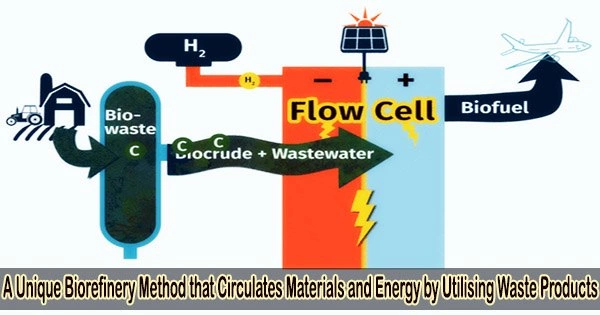By reusing the by-products of the goal product, the research team at Tokyo University of Agriculture and Technology (TUAT) has created and developed a novel recycling process for generating chemicals generated from biomass.
In this work, the research team used numerical simulations to show how a self-sustaining process can reduce the need for external utilities in the chemical process.
By reusing by-products that had been disposed of in the conventional process in the chemical process to maintain profitability, this accomplishment has considerably contributed to energy conservation. Additionally, this study was created with a biomass supply that is practical in all places, unlike earlier methods that were large-scale in nature.
This method deviates significantly from traditional procedures. With this accomplishment, we may create a society that prioritizes recycling by drastically reducing the amount of petroleum used in chemical operations.
Additionally, it is anticipated that employing agricultural and forestry waste in hilly regions, a chemical industry will be created for local production and consumption.
The results have been published in Chemical Engineering Research and Design.
The renewable carbon source that can take the place of fossil fuels in the manufacturing of chemicals is biomass. Among the biomass-derived chemicals, levulinic acid (LA) is attracting attention as a platform chemical because it can be synthesized from cellulose, which makes up about 50% of woody biomass, and is a precursor for a wide range of substances from pharmaceuticals to bio-fuels.
With an annual biomass supply of more than 120,000 tons, conventional LA production techniques from biomass are large-scale operations that have difficulty making the most use of all available biomass resources.
In response, this research team has created a procedure that reduces the need for external utilities while still being able to provide all of the necessary energy from the burning of byproducts produced during the synthesis of LA from biomass.
Specifically, by reusing the by-product formic acid as a catalyst, using a chemical called furfural obtained from biomass as an extraction solvent to purify LA, and combusting the solid by-products, the total process energy was reduced and supplied by itself.
It was also discovered that the surplus solid by-products may be successfully used as building materials and for other things. We also found that using river water could provide all the cooling needed.
The amount of river water is less than 0.12% of the minimum annual volume flow in the middle reaches of the Naka River in Tochigi Prefecture, located in a rural area of Japan.
Economically speaking, the method yielded LA at a minimum selling price of $9.59 per kilogram, greater than the $7.17 per kilogram market price. The reason is that this process does not perform by-product separation and purification, which is a benefit of large-scale operations and allows for quite thin profit margins.
The findings of this study show that, for a locally generated and consumed chemical industry employing agricultural and forestry waste in mountainous areas, this procedure may be fully implemented in society.
















